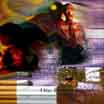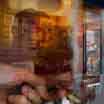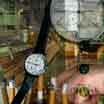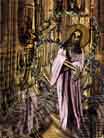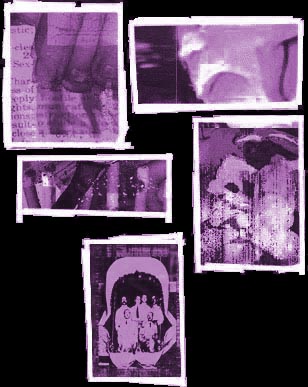 |
digital art
|
All of these images were created on mass consumer personal computers, with mass consumer software--Macintosh Power Macs and G3s, and Photoshop 5+, to be precise.
These are the industry standard tools for graphics manipulation, but isn't it problematic, in terms of making art, to have an "industry standard"? The means of constructing these digital images were products designed by teams of computer and software engineers, and marketed commercially by corporations. It is easy for many to think that these processes could result in little that was personal, let alone artistic. This is and has been a common prejudice, and is rather neo-luddite in nature. When technological advancement (which is essentially just changing modes of ever advancing power) threatens encroachment upon activities that we consider to be uniquely human, then the mental barriers are thrown up and the new discoveries or methods are dismissed as incomplete simulations of the "real" thing.
The original factory-smashers were trying to protect what they considered humanity's rightful dominion over physical labor. The contemporary version is trying to protect what they consider humanity's rightful dominion over mental, or spiritual labor. Both fail to see the larger reality, to recognize how impure our claims over these domains are to begin with, but of course it isn't a question of historical truth or trend--it is always about the fear of being replaced. |
Series VII: Body Portraits
|
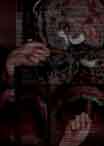
These Are Scans (1999)
original 7" x 5", 100 dpi |
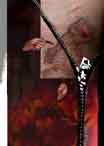
There Are Layers (1999)
original 7" x 5", 100 dpi |
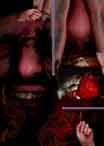
Decorative Lines (1999)
original 7" x 5", 100 dpi |
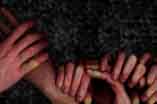
Continuity (1999)
original 8" x 14", 100 dpi |
|
In the case of digital art, what is being replaced is the direct physical touch, the manipulation of physical materials to construct a surface or object. Instead, there is a rather distant interface, as one device is moved or struck to influence another to influence another, to finally light pixels on a monitor. This allows for a great deal of freedom, both to make endless changes or endless perfect copies, and also to not be limited by the properties of any particular material--only by your power of conception (and the speed of your computer). However, it does seem to replace that need for the direct touch of a skillful hand. So does photography, a medium that also had been dismissed as non-artistic, because it made representation "too easy," and so replaced the need for illusionary craft to depict a subject.
The wonderful and frustrating thing about technology is that, working so damn well, it floods around the reservations and prejudices that many might have against it, and forces a reckoning. The success of photography yanked away the main function that painting had performed for centuries, that of accurate depiction. Some would say that the practice of painting was forced to find other modes to survive, but it was more of a liberation, from the slavery of pictorial literalism, for the painter, and for the photographer who wished to show what he saw in the world, from the necessity of having to painstakingly construct a depiction of it first. |





